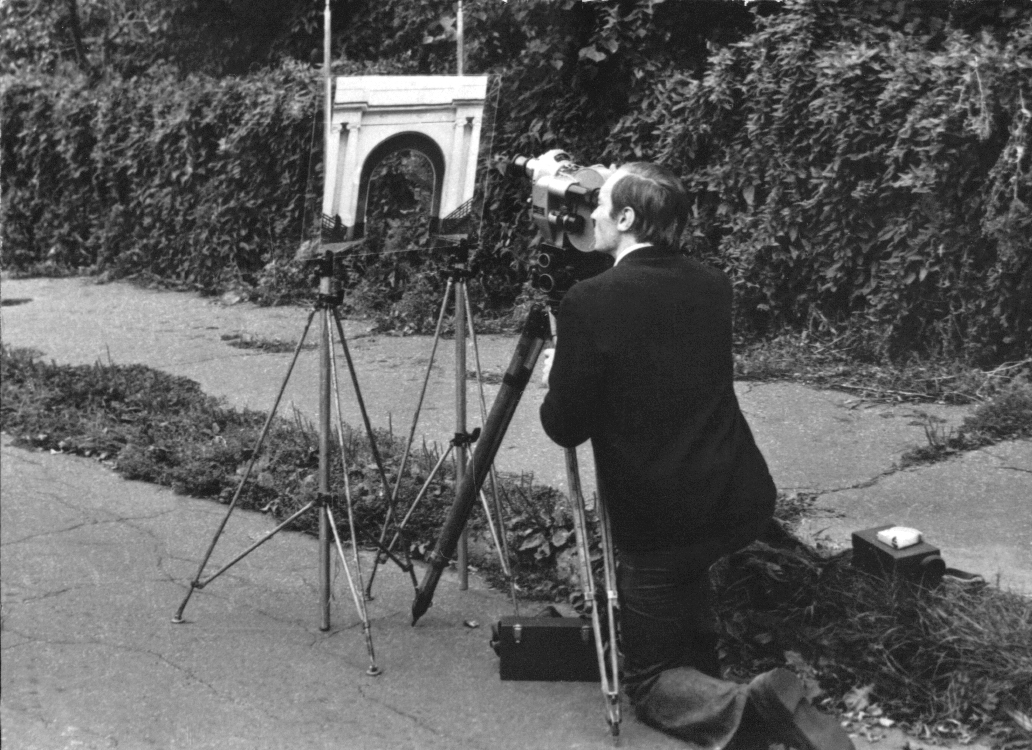Matte Painting
Glass Shots - Mattes painted on glass and placed in front of the camera
A cost-effective feature in the film industry which is also a technical effect. Glass is painted with aspects of scenery and can be employed as foreground or background. Usually the painted glass is placed directly in front of the camera lens resulting in an economical foreground. The subjects -- the actresses and actors -- are photographed directly through the glass that is not painted. An old technique, which has taken on various new hues, that saved on location costs or studio constructions that might otherwise have consumed a great deal of time to build.
Mattes composited as backgrounds or insets in postproduction

Norman Dawn made several improvements on the matte shot to apply it to motion picture, and was the first director to use rear projection in cinema.
Dawn combined his experience with the glass shot with the techniques of the matte shot. Up until this time, the matte shot was essentially a double-exposure: a section of the camera's field would be blocked with a piece of cardboard to block the exposure, the film would be rewound, and the blocked part would also be shot in live action. Dawn instead used pieces of glass with sections painted black (which was more effective at absorbing light than cardboard), and transferred the film to a second, stationary camera rather than merely rewinding the film. The matte painting was then drawn to exactly match the proportion and perspective to the live action shot. The low cost and high quality of Dawn's matte shot made it the mainstay in special effects cinema throughout the century. [2]
Traditionally, matte paintings were made by artists using paints or pastels on large sheets of glass for integrating with the live-action footage.[1] The first known matte painting shot was made in 1907 by Norman Dawn (ASC), who improvised the crumbling California Missions by painting them on glass for the movie Missions of California.[2] Notable traditional matte-painting shots include Dorothy’s approach to the Emerald City in The Wizard of Oz, Charles Foster Kane’s Xanadu in Citizen Kane, and the seemingly bottomless tractor-beam set of Star Wars Episode IV: A New Hope.

Link:http://en.wikipedia.org/wiki/Matte_%28filmmaking%29
Created environments using Digital Paint, 3D models, CG Textures, Photographs etc. (300, Sky Captain, Avatar)
Paint has now been superseded by digital images created using photo references, 3-D models, and drawing tablets. Matte painters combine their digitally matte painted textures within computer-generated 3-D environments, allowing for 3-D camera movement.[6] Lighting algorithms used to simulate lighting sources expanded in scope in 1995, when radiosity rendering was applied to film for the first time in Martin Scorsese’s Casino. Matte World Digital collaborated with LightScape to simulate the indirect bounce-light effect[7] of millions of neon lights of the 70s-era Las Vegas strip.[8] Speedier computer processing times continue to alter and expand matte painting technologies and techniques.
Common tools for digital matte painting and compositing: Photoshop, Painter, Nuke, AfterEffect, ect.
Really Good Matte Painting Work I had seen in your videos..
ReplyDeleteI am yet working on Matte Painting .
http://www.gameyan.com/